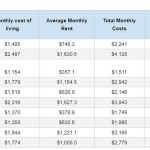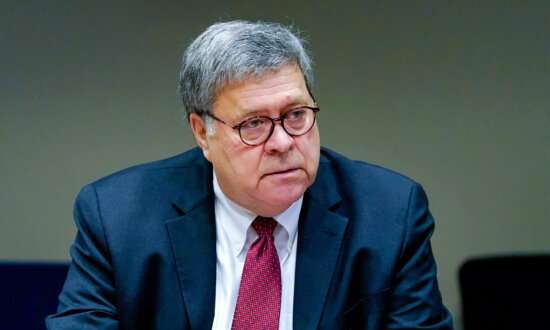We are now war correspondents. That’s your new assignment if you cover Congress. The threat against the U.S. Capitol likely won’t dissolve any time soon.
Until Jan. 5, 2021, those of us in the Capitol Hill press corps shared a common set of reporting responsibilities. We arrived at the U.S. Capitol daily. We tracked legislation. Focused on amendments to tax bills. Studied trade policy. Traced motions to recommit on the House floor. Sat in on confirmation hearings for the federal judiciary. Reported on House leadership races. Deciphered Senate amendment trees. We would stand all night outside the office of House Speaker Nancy Pelosi, D-Calif., during government shutdowns and efforts to pass Obamacare.
Members of the National Guard work outside the U.S Capitol building on Capitol Hill in Washington, Thursday, Jan. 14, 2021. (AP Photo/Andrew Harnik)
And those of us present on Jan. 6 to cover the certification of the Electoral College covered an insurrection to seize control of the very building in which we report: the U.S. Capitol.
How much more terrorism and butchery will we cover?
Is there a limit to how many times you can go through these episodes before your own number is up, too?
One Republican House member told me the other day he would pack heat around the Capitol now. He noted he was on the field in Alexandria, Va., in June 2017 when a gunman opened fire on the GOP baseball practice. The same lawmaker was stuck on the House floor during the Capitol siege.
“No three strikes and out for me,” said the Republican.
Consider the most celebrated war correspondent of all time: Ernie Pyle from World War II. He covered the battle of Britain, the North African Campaign, and the Normandy invasion. In 1945, Pyle embedded with the Army’s 77th Infantry Division off Okinawa. Got pinned down. Popped his head up from a ditch after some artillery fire.
And that was it for Pyle.
Consider some of the mayhem congressional reporters have covered in recent years which have nothing to do with legislation and hearings:
The 1998 shooting at the Capitol of U.S. Capitol Police Officer Jacob Chestnut and Detective John Gibson. The 9/11 plane headed toward the Capitol which eventually crashed in Pennsylvania. The 2001 anthrax attack on the Senate. The 2011 assassination attempt on the life of former Rep. Gabrielle Giffords, D-Ariz. The wild car case on Capitol Hill which culminated in USCP officers killing Miriam Carey during the 2013 government shutdown. The baseball practice shooting which wounded House Minority Whip Steve Scalise, R-La.
We haven’t even discussed going to the Capitol on a daily basis to cover Congress in the age of COVID.
Show up on Capitol Hill for work now and you must navigate a “Green Zone” like in Baghdad to reach the building.
And, considering the radioactivity of threats to the Capitol, it’s doubtful these layers of security disappear any time soon.
CAPITOL POLICE INTELLIGENCE REPORT BEFORE JAN. 6 RIOT WARNED ‘CONGRESS ITSELF’ COULD BE TARGETED: REPORT
This isn’t just covering the markup of a higher education bill before the House Education & Labor Committee or chasing down senators in the Ohio Clock Corridor.
Do you want to report on the national legislature or Beirut?
Traverse the Capitol “Green Zone” now, past the Longworth and Rayburn House office buildings, and you may as well be Edward R. Murrow at Trafalgar Square. Murrow famously placed his microphone on the concrete to record the haunting sounds of Londoners walking to the bomb shelters past St.-Martin-in- the-Fields church. Murrow said the footsteps sounded like “ghosts with steel shoes.”
Listen today and these are just congressional aides trying to get into the Cannon House Office Building to conduct the people’s business.
Reporters aren’t thumbing Huey helicopter rides in the Mekong Delta during Vietnam. But you never know where the threat is coming from. No school groups visiting Congress now or Future Farmers in America. The crowd which showed up the other day wanted to derail the certification of the Electoral College and potentially kill lawmakers.
There was extraordinary heroism on Jan. 6 by Capitol Police officers. The plainclothes USCP officer who fired a solitary shot, defending the Speaker’s Lobby. Otherwise, the mob may very well have stormed the House chamber with members still inside. Officer Eugene Goodman baited marauders up a Senate staircase – as senators escaped out the back door.
The fact that security officials evacuated the entire U.S. Senate from the chamber may be the greatest success story of the Jan. 6 attacks. The Capitol is just a building. Congress is comprised of people. USCP officers protected the members.
But what precautions must Congress implement to protect the Capitol after the inauguration is done? Echoes of the Jan. 6 calamity will resonate for a long time. Is Congress only safe if they secure the Capitol with a cavalcade of armored personnel carriers and a wall strung with razor wire? It’s not like someone just flips a switch on Jan. 21 and the threat is over. The mob revealed just how vulnerable the Capitol is.
What about the threat on Feb. 13? Or March 3? Or April 10?
Random days. Anything can happen.
More importantly, do the measures which remain constitute little more than security theater? And how does this affect the press corps? Reporters are the eyes and ears of the public, watching Congress, during one of the most volatile periods in American history since Reconstruction.
The Speaker’s Lobby behind the House chamber is where reporters talk up aides and lawmakers. Officials shuttered the Speaker’s Lobby to the press due to the pandemic. One wonders if the Speaker’s Lobby will re-open once the pandemic subsides. That’s where the USCP officer fired his shot. And, what happens with the use of magnetometers now erected at the doorways to the House chamber and Speaker’s Lobby?
NEW VIDEO SHOWS MAGA MOB RIFLING THROUGH PAPERWORK IN SENATE CHAMBER AS THEY HUNT DOWN NANCY PELOSI
Here’s a perfect example of how unevenly they apply Congressional security “rules.”
There’s a longstanding directive that any man, be it a lawmaker, aide, or journalist, entering the Speaker’s Lobby, must wear a coat and tie. No one can cite a specific House rule codifying this sartorial mandate. The closest representation of this “policy” is an annotation in the House rulebook stemming from something House Speaker Tip O’Neill, D-Mass., uttered from the chair about proper attire in the 1970s.
But congressional security officials allow lawmakers to hustle in and out of the chamber all the time in bomber jackets, blue jeans and tennis shoes to vote. They run completely afoul of this “rule.” Chamber security personnel never stop them. But if you’re a reporter without a coat and tie, you may as well be in violation of the Treaty of Paris.
So, the de facto impact? Members can wear pretty much anything they want. But who has a dress code? The press.
Here’s another glaring example of how officials treated reporters in the heat of battle on Jan. 6.
House chamber security finally evacuated everyone from the room on Jan. 6. Lawmakers. Aides. Journalists. They hustled all of the lawmakers to a secure location. But once they squirreled the lawmakers inside, reporters were left to fend for themselves. USCP made them find shelter on their own while invaders roamed the Congressional halls.
There is now an epic fight over whether lawmakers must comply with USCP directives and pass through magnetometers when entering the House chamber. Many Republicans got into shouting matches with USCP officers or simply walked around the devices. House Speaker Nancy Pelosi plans fines for members who don’t comply. But it remains to be seen how stringently the House will enforce this policy.
It’s important to see if USCP requires lawmakers to actually pass through the metal detectors in the future. Or will this be like the dress code “rule?” Lawmakers are off the hook. But reporters have to pass through the magnetometers to enter the press gallery?
Reporters didn’t attack the Capitol on Jan. 6. But watch to see if going forward they treat the press corps like they’re two ticks shy of Boko Haram.
Congressional reporters are used to this kind of treatment. Security officials hassle the press corps constantly. Stand behind that rope line. Don’t point your camera there. Don’t get too close to Senate Majority Leader Mitch McConnell, R-Ky., because you might give him coronavirus.
They pester reporters because they’re an easy target. But when the future of the republic was actually on the line, you get Jan. 6.
CLICK HERE TO GET THE FOX NEWS APP
It’s easy to liken Washington, D.C. to a “war zone” and other trite clichés right now. Why would anyone argue to the contrary? The question is that once the inauguration passes, what security measures remain in place, and for how long?
Consider all of the other attacks over the years on Congress. Gabby Giffords. The officers gunned down at the Capitol’s Memorial Door in 1998. Steve Scalise and baseball practice. Anthrax.
It’s pretty dangerous to cover Congress. It’s far from just amendments and press conferences.
Good night and good luck.












